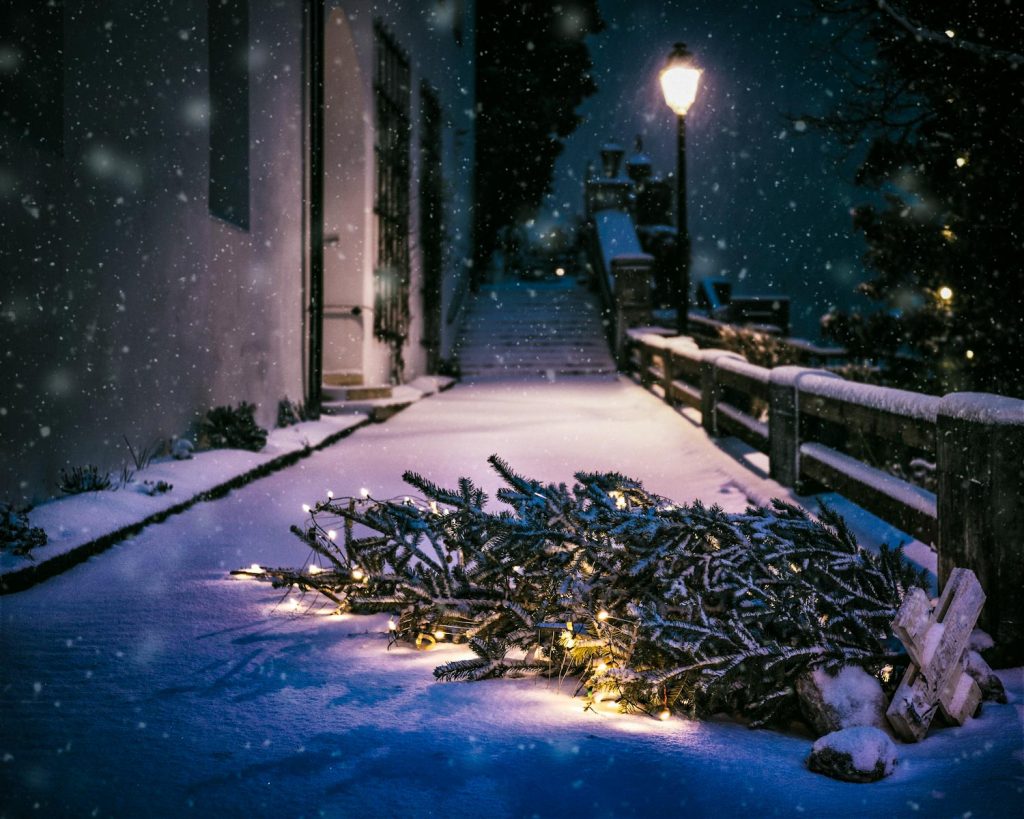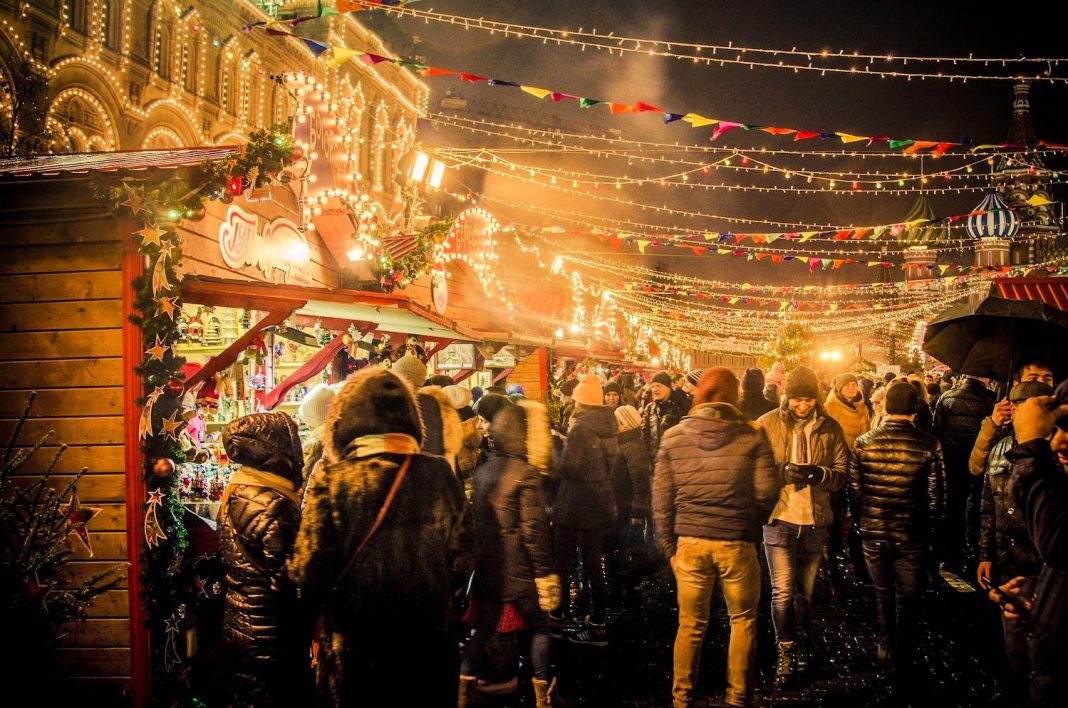Oh joy! It’s that time of year again.
For what feels like months already we’ve been wading through the drawn-out build-up to Christmas.
Shops are once again subjecting their staff to the saccharin mental torture of looping the same few jingly-jangly tunes as consumers are force-fed the pretence that it’s the best time of the year. And so, we see streets filled with temporary markets selling the kind of twee dust-collecting junk that would look equally at home on a rubbish tip. Is it any wonder that the crowds knock back mulled wine in a desperate bid to cope with it all?
We also conveniently seem to forget most of our sustainability credentials.
Of course, there are token efforts. The now familiar annual social media posts that offer helpful hints for the conscientious mass-consumer: wrap presents in old newspaper (perfect if you’re giving fish and chips); make use of your old holey socks by turning them into decorations; and regifting that unwanted national-anthem-playing toilet brush your aunt brought back from the States, etc. etc. But how much thought do we give to food waste during the season of excess? Or wrapping and giving repaired second-hand goods, or the indignity suffered by the majestic trees withering away in town squares before being discarded after a few weeks?
At least, with those Christmas markets blocking city centres, they automatically become car-free zones! (And with that, I fulfil a contractual obligation to include one positive sentence about the festivities.)
But what genuinely gets my ire is a behaviour that isn’t constrained to Christmas, but this is when it becomes much worse – and as cities grow, the threats worsen.

Let There Not Be Light!
Light pollution gets remarkably little mention in the common discourse on urban sustainability.
Granted, it’s a tricky topic. Light for day-dwelling mammals like us equates to visibility, and this is so closely tied to equality. Women especially, research suggests, feel safer in well-lit areas. City administrations have a duty to ensure that citizens are safe, and so streets, bus stops, tunnels, paths, parks, and anywhere else pedestrians frequent need lights during dark hours.
To truly meet citizens’ diverse needs, we need to adopt niche thinking. This can involve adding extra bulbs to eliminate the shadowy areas caused by existing lamps, for example, or installing down-lit handrails in railways stations for elderly people to navigate steps.
But municipal Christmas lights – is there a need for them? In short, no.
As soon as they appeared in Graz this year, the streets were filled with stock-still zombies gawping in awe as if seeing fire for the first time. So much for evolution. But with regard to impacts on behaviour, it’s not the effect is has on humans that is of concern.
Seeing the Problems Clearly
Artificial light is devastating for wildlife, and nowhere is this more pronounced than in cities. It can deter species (from as small as insects and up) from accessing feeding grounds. Nocturnal animals rely on the dark for hunting – or to avoid being hunted. The rhythm of night and day is hard-wired into many species – including us – and can even govern breeding and migration patterns.
Disrupting these long-established fundamentals of the natural world knocks ecosystems out of sync; the impact on the food chain eventually catches up with people in and outside of the city so we really do need to pay this due attention.
Moving to LEDs does offer benefits – not emitting wasted heat energy, they are far less wasteful than old filament bulbs. But they give off a blue (rather than yellow) light. This interferes with life’s circadian rhythm and therefore wellbeing – in much the same way as staring into a smartphone before bed.
And in terms of creating excess light from streetlamps or even big festive displays, the switch hasn’t helped. In Europe and the USA, this ‘light noise’ affects all but 1% of the population.
The eery dome of light city dwellers create prevents our view of the most spectacular light show of all – the night sky.
Merry Krampus!
Commerce and tourism seem viable counterarguments until we consider how little enthusiasm there is for Crimbo lights due to municipal energy costs.
Anyone who claims that lights bring too much joy to be jettisoned in a cost-of-living era should therefore question why another Austrian tradition – the Krampus parade, which always receives a party-like reception – has been cancelled two years in a row for ‘budgetary reasons’.
Don’t Keep us in the Dark – Streetlighting Solutions

If it’s safe, consenting, and legal, no one should be deterred from celebrating what they enjoy. Out of the religious context, Christmastime is predominantly about community and – harking back to its pagan origins – surviving the winter. So, let people enjoy it.
But festivals don’t need to infringe on every other aspect of city living. We can be smarter about the way we illuminate our environment – and that applies all year round.
The organisation Dark Skies offer simple advice on how households can help, for example by ensuring curtains and blinds are closed at night, and only using the electric lighting we really need to.
But to combat light pollution, it’s city-wide solutions we really need.
Plenty of municipalities have already decided to cut back on streetlighting to save on energy. This should only happen, though, where it doesn’t compromise safety: Christmas displays can go, streetlighting should improve.
A Lightbulb Moment – Smart Solutions
Another form of light can offer us some fresh solutions: the humble traffic light.
First of all, at night these should be responsive so that pedestrian waiting times are kept to a minimal after dark. Better still, what if we didn’t have to press a button at all? We’re live in Smart Cities, so could a sensor assess when someone is approaching and change the lights in advance?
Similar technology could be used on streetlamps. While no one is around, entire areas of city could be swathed in darkness. When someone enters a set radius – say, 50m – the light would turn on, illuminating our way ahead. After a minute of inactivity – off again.
Not only would this allow pedestrians or cyclists to see where they’re going without ever stepping out of the cover of light, but it could theoretically improve safety: we’d see lights turn on from afar, allowing us to know when there are others about and change our route if it feels intimidating.
False alarms are inevitable: animals setting them off, for example. Surely this is a minor drawback.
What is more, analysing the patterns of these lights could inform us the most frequented routes and how people navigate the city when they feel (un)safe, so we can focus lighting infrastructure where it’s needed (e.g. bus routes, benches, and shelters).
By taking a dim view to light pollution, we can really show the way to fairer urban spaces – for people and planet.


